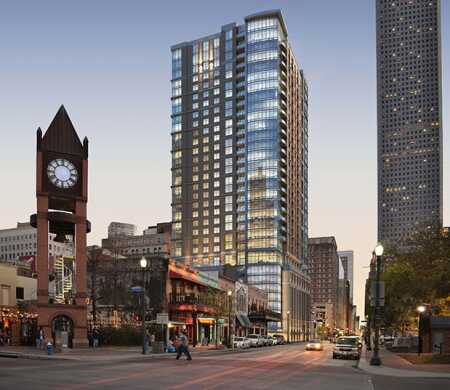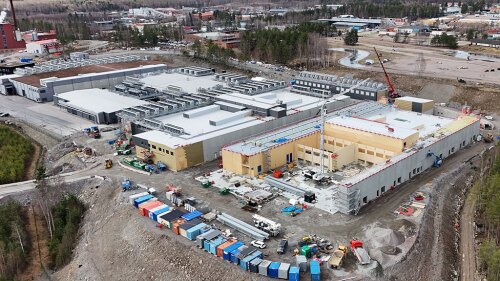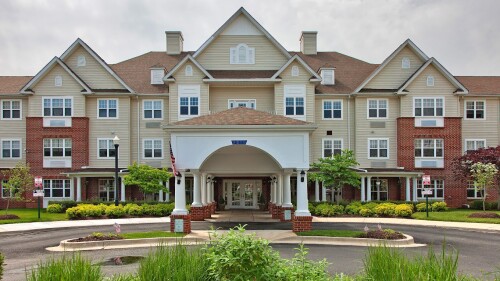Imagine a boomtown of 2.1 million inhabitants that sprawls jaggedly over 600 square miles (1,600 sq km), but without a multicolored map to denote areas for specific land uses or a formal zoning ordinance to prohibit, say, a skyscraper from rising in the middle of a neighborhood full of bungalows. In the abstract, that description might sound to some like an urban nightmare—a recipe for clashing, haphazard development, economic risk, and low livability.
But in Houston, the lone major city in the United States that never has enacted zoning, the actual landscape hardly matches that dire hypothetical scenario. “If you drive around Houston after you’ve been to other major cities, you’ll find that, in many ways, we look very similar,” says Patrick Walsh, the city’s planning director. “We have commercial corridors with a lot of activity and a mix of uses; residential neighborhoods that are distinct and fairly uniform.”
And while Houston has been derided by outsiders for its occasional out-of-scale tower—the urban planning website Next City once ran a story about seven buildings that it asserted would never be built anywhere else—the city’s essential degree of order persists, even in the midst of explosive recent growth. According to the Greater Houston Partnership, the city issued building permits for $8.5 billion in new construction in the 12 months ending October 2014—a 41 percent increase over the previous year. CoStar Group, a market research group, reported that at the end of 2014, nearly 18 million square feet (1.7 million sq m) of new office space was under construction—about 15 percent of what was being built nationwide.

The Upper Kirby municipal management district helped promote development by amassing land around Levy Park. Developer Midway is building an office and retail building on one adjacent parcel, and a residential building on another, and underwriting most of the cost of an extensive renovation of the park itself. (Midway)
In January, when runners in the Chevron Houston Marathon made their way along the 26.2-mile (42 km) route through the city, they passed through a thicket of construction cranes and no fewer than 15 different major development projects. They ranged from the 40-story Hines Market Square tower, featuring a mix of luxury residential and commercial space that will offer amenities ranging from a virtual golf simulator to a grocery store, to a 30-story office tower that will be occupied by BHP Billiton Petroleum. The runners also got a glimpse of Buffalo Bayou Park, a 160-acre (65 ha), $58 million recreational area that is being developed by a public/private partnership.
Houston works without what locals jokingly call “the Z word,” Walsh and others explain, because even though the city lacks formal zoning, it is not an anything-goes environment in which developers have complete, unfettered freedom. Instead, over the years, the city has devised other restraints, including ordinances that regulate design and limit certain uses, even if they do not dictate specific areas where those uses must go.
In addition, other legal and governance mechanisms have evolved, including deed restrictions and historic designations that allow homeowners in a neighborhood to impose rules that function as a sort of de-facto locally controlled zoning, and district organizations that give local businesses some influence in shaping the look and character of their areas. Finally, developers themselves have stepped in to fill the regulatory gap by creating master-planned communities—most on the suburban periphery, but some within Houston itself—that provide a more carefully controlled environment for those who seek it.
Proponents of “the Houston way” argue that its combination of patchwork regulation and local control provides valuable flexibility to respond quickly to market shifts and reduces costs for developers, while still protecting neighborhoods’ character and ensuring quality in the built environment. “Houston doesn’t have an ordinance that regulates by geographic zones in the traditional manner,” says Reid Wilson, a Houston real estate attorney and zoning expert. “But by nontraditional concepts, it’s gotten to something similar.”
Houston’s philosophy of subtle, minimal intervention may face new challenges in an era when cities are under increasing pressure to densify, repurpose aging industrial infrastructure, and coalesce around walkable mixed-use urban cores. But with conventional zoning seemingly unlikely to ever catch on, municipal officials instead are working on an updated alternative—a first-ever citywide plan that strives to integrate the existing regulatory pieces and use them in a more coordinated fashion.
Evolution of the No-Zoning City
As Houston public radio journalist Craig Cohen once jokingly explained, the city’s lack of zoning is “why the pawn shop is next to the taquería, which is next to the high rise, which is next to the gas station, which is next to the other pawn shop.” But others say such chaos is not the problem in Houston that one might expect, due to restraints such as deed restrictions and ordinances that restrict how close certain uses can be to residential neighborhoods.
“It’s not such a weird thing, not having zoning,” says Anna Mod, a Houston architectural historian and preservation specialist. “You did see some terrible examples in the past, such as an auto-body spray shop next to a house. But it would be harder for that to happen now.”
For developers, Houston’s lack of conventional zoning has definite advantages. When local developer Midway Companies acquired a declining shopping mall in the city’s western energy corridor area in the mid-2000s to build CityCentre, a mixed-use, pedestrian-friendly complex, for example, it was able to proceed after obtaining just a single building code variance, according to executive vice president Shon Link. That is a small fraction of the variances that a similar project might have required in Austin, another growing Texas city, according to commission chairman Mark Kilkenny. Approval by the city’s planning commission involves little more than submitting plats and a preliminary plan and is generally straightforward, as long as no public works issues need to be resolved, Kilkenny says.
“It’s not that somebody can just come in and do whatever they want with a piece of land,” explains Kilkenny, who is also an executive vice president with Mischer Investments, a local real estate development group. “But Houston is unique in providing predictability. The time frame for moving a project forward is much more compressed.”
Houston’s nuanced approach to regulating land use evolved along with the city. Zoning caught on in much of the rest of the nation during the early to mid–20th century, but efforts to establish it in Houston, which had a longstanding tradition of minimal government, repeatedly went nowhere. The major obstacle has been that the city’s charter bars the council from enacting a zoning ordinance unless it is first put to a popular vote, according to a 2012 analysis by South Texas College of Law professor Matthew J. Festa. In 1948, a contingent of zoning advocates, led by influential financier and Houston Chronicle owner Jesse Jones, fought a political battle with antiregulatory activists led by oilman Hugh Roy Cullen, who reportedly considered zoning to be socialistic and un-American. That year, voters rejected zoning by a greater than two to one margin, and similar ballot measures in 1962 and 1993 also failed.
As the city expanded, some of the warnings about the dangers resulting from a lack of zoning did not come to pass. “Glue factories did not spring up in River Oaks,” as once noted. But the aversion to regulation did, at times, lead to problems. During the late 1970s and early 1980s, clusters of mid-rise and high-rise towers sprouted in an area that became known as Woodway Canyon, and were jammed so close to the property line that they prevented street widening and created utility access problems, according to a 1995 Houston Chronicle article. Similarly, in the city’s Museum District, others took advantage of the lack of regulation to squeeze as many as five townhouses onto one residential lot, the newspaper reported.
Some of those issues led municipal officials to look for other ways besides zoning to regulate development. In 1982, the city council enacted Houston’s first setback restrictions, and since then, the city has added standards for everything from parking to buffer space around high rises. In addition, regulations restrict certain types of uses—motels, industrial facilities such as metal-plating plants, and cell towers—from being located close to residential neighborhoods, schools, and parks.
“If you think about why people zone in the first place, the major reason is to prevent incompatible adjacent uses,” Walsh explains. “We have a lot of rules in place to control that.” The main difference between Houston and other cities is that it does not restrict uses to specific spots on the map, he says.
“Thirty years ago, there were some things we were headed toward that wouldn’t have been good,” Kilkenny says. “We saw things we didn’t like, and we’ve learned from them.”
Local and Private Controls
But ordinances are only one tool in Houston’s regulatory toolbox. Other mechanisms have evolved that allow local homeowners to control their neighborhoods, and allow businesses in designated urban districts to band together to influence development.
One key regulatory tool is the private deed restrictions in residential subdivisions, which for decades have been put in place by developers to reassure potential buyers that someone would not acquire the parcel next door and build something that would hurt the value of adjacent properties. The restrictions vary from neighborhood to neighborhood, but since the 1960s they have been enforced by the city itself, which gives them added power.
As Wilson explains, the deed restrictions function as a sort of de-facto zoning. “But instead of regulation being top-down from the government, we have a bottom-up, populist version of zoning, in which people in an area use a private contract that they can amend as the form of regulation.”
But this sort of private regulation also provides more flexibility than conventional zoning. “A neighborhood can decide if it wants to move from single-family residential to mixed use, or to alter lot size or permitted height, and it can do it very quickly,” Wilson says.
Houston developers also have used deed restrictions to create master-planned subdivisions, which impose private rules that in many ways are even stricter than conventional municipal zoning. While most of those enclaves are in the suburbs, a few—such as Beltway Business Park, a 400-acre (162 ha) commercial business center in southwest Houston, built in 1970—actually lie inside city limits. “We provide the protection that people look for from zoning in other places,” says David Hightower, an executive vice president with developer Wolff Companies. “That way, somebody who is going to build a $250 million office building knows that the site next door is not going to be a hubcap shop.”
A local ordinance passed in 1995 also has enabled the creation of 22 historic preservation districts throughout the city, in which a majority of residents have voted to protect the look of a neighborhood. Developers in those areas must submit designs for projects to the Houston Archaeological and Historical Commission, which cannot regulate land use, but can raise issues about the exterior of a building or any additions that are made. One of the districts, the Glenbrook Valley Historic District, includes nearly 1,300 ranch-style and mid-century modern homes built between 1953 and 1962 by developer Fred McManus, and is the largest postwar historical district in the nation, according to Mod, the aforementioned architectural historian.
Another mechanism for exerting local influence upon land use in Houston is the array of 22 municipal management districts (MMDs), which cover about one-third of the city’s area. Created by the state legislature, MMDs are structures that enable local property owners in an area to band together and levy small taxes—a maximum of 15 cents per $100 of property value—upon businesses and multifamily residential properties in their area, in order to fund capital improvements, and they can partner with government agencies.
In Houston’s Greater East End MMD, for example, what was once a landscape dominated by a shipyard, heavy industry, and warehouses has morphed into a mixed-use area that has attracted 10,000 new inhabitants over the past 15 years. “In the last year, we’ve obtained $29 million in federal grants; built 30 miles [48 km] of sidewalks, bikeways, and trails; and put in 150 trees,” district president Diane Schenke says. “We’ve worked very hard to make this a pedestrian- and transit-friendly neighborhood.”
Meanwhile, on the other side of downtown Houston, the Upper Kirby MMD helped promote development by amassing land around Levy Park. Local developer Midway is building a 250,000-square-foot (23,000 sq m) office and retail building on one parcel to the east, and a 270-unit residential complex on another parcel to the south, as well as teaming up with the district to underwrite most of a $10 million renovation of the park itself.
“When we started the district back in 1988, this area didn’t even have a name,” says Upper Kirby president Jamie Brewster. “It was basically a corridor from the Astrodome to downtown, a pass-through with some car dealerships.” The MMD, she says, “provided the opportunity to seek more desirable uses for properties.”
Carrot Instead of a Stick
One drawback of not having conventional zoning is that city officials are deprived of the option of trading approvals for concessions from developers, such as commitments to build affordable housing in an area. “Houston doesn’t have mandatory ways to control land use, so we have to incentivize it,” Wilson says.
Thus, some of the MMDs overlap with tax increment reinvestment zones (TIRZs), which state law has created to fund improvements in areas that are having difficulty attracting development.
TIRZs can be used to acquire deteriorating properties and fund infrastructure upgrades ranging from parking facilities to sewers and streetlights, according to the city of Houston’s website. The reinvestments are directed by a board of stakeholders from within the zone, who develop a plan for upgrades to be approved by the city. TIRZ-funded improvements reportedly played a crucial role, for example, in developers Padua Realty and Perry Homes moving ahead on East End on the Bayou, a project of 73 high-end townhouses that broke ground in November 2014.
But the prime example of the carrot-instead-of-a-stick approach is the Downtown Living Initiative, which the city government created in 2012 to attract more residential development to that area.
The program offers a tax rebate of up to $15,000 per apartment spread out over 15 years, and since most of the properties are rentals, the benefit goes to the developer. More than 4,200 units are being created as a result of the program, and they could more than triple the downtown population of 3,600. One of the first towers completed under the program—the 336-unit Skyhouse Houston, which features amenities such as barbecue grills, a yoga studio, and a rooftop pool—has seen such strong demand that the developer, Novare Group, is now building a second tower, SkyHouse Main, nearby, according to spokesman Thornton Kennedy.
While most local observers think that conventional zoning will never happen in Houston, some advocates continue to call for more regulation. Former city councilman Peter Brown, for example, warns that Houston has to push harder to promote denser, walking-scale neighborhoods, or risk succumbing to paralyzing traffic congestion from its traditional auto-centric culture. “Many people feel that we’ve almost reached the limit,” he says. “We need to create a more orderly city in which people aren’t stuck in their cars, and surface parking doesn’t take up so much space.”
Municipal government is opting for a different route to preparing for Houston’s future challenges. For the first time, officials are developing a general plan for the city—although, unlike other cities’ plans, it still will not use zoning. Instead, officials are sifting through the patchwork of private and public regulation, in addition to various piecemeal planning initiatives, in an effort to meld them into a single strategy. Planning director Walsh, for one, still seems committed to the Houston way: “While there are advantages and disadvantages to our system, there are disadvantages of having zoning, too,” he says. “It can cause a segregation of uses that can make a city less vibrant and less interesting.” That is something Houston seems determined to avoid.
Patrick J. Kiger is a Washington, D.C.–area journalist, blogger, and author.
Experience everything the Urban Land Institute offers! By joining ULI, you receive a free print edition of Urban Land, exclusive members-only content, significant discounts on events, workshops, and publications, and more.
Receive updates on similar articles from Urban Land magazine. Click here to sign up for our FREE weekly e-mail newsletter.








